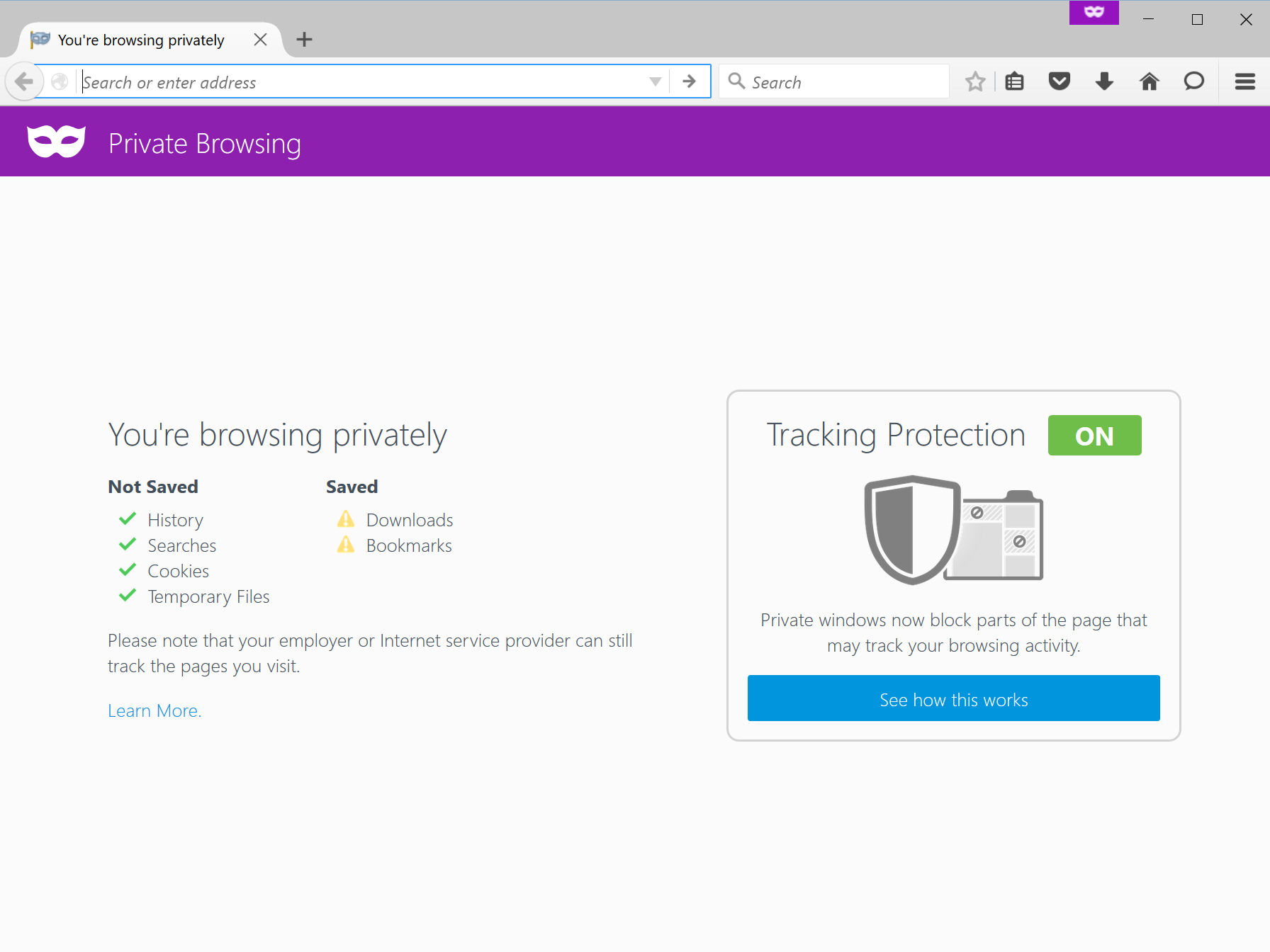Mozilla today launched Firefox 42 for Windows, Mac, Linux, and Android. Notable additions to the browser include tracking protection, tab audio indicators, and background link opening on Android.
Firefox 42 for the desktop is available for download now on Firefox.com, and all existing users should be able to upgrade to it automatically. As always, the Android version is trickling out slowly on Google Play.
Mozilla doesn’t break out the exact numbers for Firefox, though the company does say “half a billion people around the world” use the browser. In other words, it’s a major platform that web developers target — even in a world increasingly dominated by mobile apps.
The new private browsing mode goes further than just not saving your browsing history (read: porn sites) — the added tracking protection means Firefox also blocks website elements (ads, analytics trackers, and social share buttons) that could track you while you’re surfing the web, and it works on all four platforms. The feature is almost like a built-in ad blocker, though it’s really closer to browser add-ons like Ghostery and Privacy Badger because ads that don’t track you are allowed through.
Here is Mozilla’s thinking behind the feature:
We created this feature because we believe in giving you more choice and control over your Web experience. With the release of Tracking Protection in Firefox Private Browsing we are leading the industry by giving you control over the data that third parties receive from you online. No other browser’s Private Browsing mode protects you the way Firefox does — not Chrome, not Safari, not Microsoft Edge or Internet Explorer.
The new private browsing mode also has a Control Center with all of Firefox’s site security and privacy controls. Since some web pages may appear broken when elements that track behavior are blocked, Control Center lets you turn off Tracking Protection for a particular site.
To try it out, click the hamburger menu button (three lines in the top right corner), click the New Private Window icon to launch a Private Browsing session, and you’ll see a screen that confirms Tracking Protection is on. Now all you have to do is browse the Web as usual.
That’s for desktop browsers. On Android, tap the Firefox Menu button (below the screen on some devices, or at the top-right corner of the browser on others) and then tap New Private Tab.
In short, Mozilla is attempting to take browser privacy to the next level. The company is seeing a lot of support from Firefox users, especially those who believed private browsing was already protecting them from third-party tracking on the Internet.
There are also potential performance improvements. A recent paper found that with tracking protection enabled, the top 200 news sites saw a 44 percent median reduction in page load time and 39 percent reduction in data usage.
In August, Mozilla added the new experimental feature to Firefox Developer Edition for Windows, Mac, and Linux, as well as the Firefox Aurora channel on Android. In September, the feature arrived in the beta channel, and now it’s finally available for all users.
Desktop
Privacy features aside, Firefox 42 for Windows, Mac, and Linux brings the addition of tab audio indicators. We broke the news in July that the feature was coming to Firefox. It was added to Firefox Nightly later in the month and then for beta users in September.
The feature shows a speaker icon if a tab is producing sound. A single click mutes (speaker icon gets crossed out) or unmutes the given tab. Here is a tab audio indicator and muting in action:
The best part is that you can mute a tab without having to switch to it first. As shown in the screenshot above, I was able to click on the speaker icon to mute the YouTube tab without leaving the VentureBeat tab.
This functionality has been available through browser add-ons and extensions for a while, but users want it built into the browser. While Chrome has had audio indicators for more than a year now, only last month did it gain the ability to easily mute tabs. Now just Microsoft’s Edge has to catch up.
Here’s the full Firefox 42 changelog:
- New: Private Browsing with Tracking Protection blocks certain Web elements that could be used to record your behavior across sites
- New: Control Center that contains site security and privacy controls
- New: Indicator added to tabs that play audio with one-click muting
- New: WebRTC improvements: IPV6 support, Preferences for controlling ICE candidate generation and IP exposure, Hooks for extensions to allow/deny createOffer/Answer, Improved ability for applications to monitor and control which devices are used in getUserMedia
- New: Login Manager improvements: Improved heuristics to save usernames and passwords, Edit and show all logins in line, Copy/Paste usernames/passwords from the Context menu, Migration imports your passwords to Firefox from Google Chrome for Windows and Internet Explorer; import anytime from the Login Manager
- Changed: Improved performance on interactive websites that trigger a lot of restyles
- HTML5: Implemented ES6 Reflect
- HTML5: Support ImageBitmap and createImageBitmap()
- HTML5: Media Source Extension for HTML5 video available for all sites
- Developer: View HTML source in a tab
- Developer: Remote website debugging over WiFi (no USB cable or ADB needed)
- Developer: Asynchronous call stacks now allow web developers to follow the code flow through setTimeout, DOM event handlers, and Promise handlers.
- Developer: Configurable Firefox OS Simulator in WebIDE, to simulate reference devices like phones, tablets, even TVs
- Developer: CSS filter presets in the Inspector
- Developer: Ability to save filter presets inside CSS Filter Tooltip
If you’re a web developer, more details are available for you here: Firefox 42 for developers. You may also want to check out Firefox 44 Developer Edition, which Mozilla also released today.
Android
Firefox 42 for Android isn’t a major release by any stretch. That said, the Android app is still getting some notable improvements. Aside from the new private browsing and tracking protection, the biggest one is probably being able to open links from Android apps in the background.
Even if you have Chrome as your default browser, you now queue up tabs in the background without switching to Firefox. When you open Firefox, all those tabs will open for you automatically.
Here’s the full Firefox 42 for Android changelog:
- New: Private Browsing with Tracking Protection blocks certain Web elements that could be used to record your behavior across sites
- New: Open external URLs from Android apps in the background
- New: Family-friendly browsing for Android when users create a restricted profile on tablets
- New: Use scrollable tabs for panels navigation
- New: Support direct voice input for searching from the URL bar
- New: Mobile login manager (about:logins) lists all saved logins and allows users to view/edit or delete logins
- Changed: Improved performance on interactive websites that trigger a lot of restyles
- HTML5: Implemented ES6 Reflect
- HTML5: Support ImageBitmap and createImageBitmap()
- HTML5: Media Source Extension for HTML5 video available for all sites
- Developer: Remote website debugging over WiFi (no USB cable or ADB needed)
Mozilla typically releases new Firefox versions every six weeks, and we thus expect Firefox 43 to arrive sometime in mid-December.




